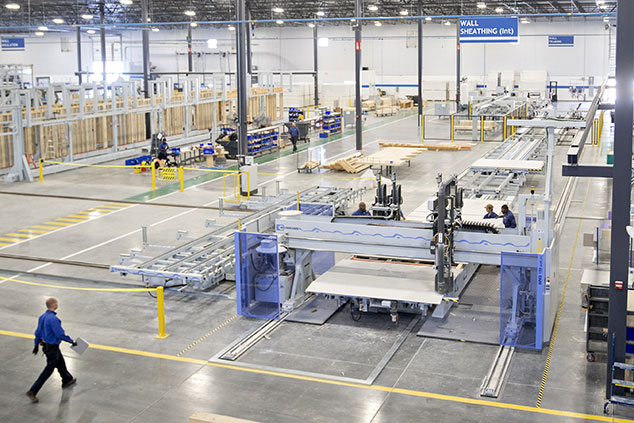
I wrote here a few months ago that it was time we got a grip on the way we build houses in the UK. Among all the muttering about robots nicking our jobs, there is precious little sign of automation in the residential building sector.
Stop by “a residential building site almost anywhere in the world and you’ll see lots of men with hammers and handfuls of nails” I said. “They’re knocking together houses in the same way they have been knocking together houses for decades. Sure, various components of the houses are mass-produced and the materials used for insulation and the like have changed here and there, but to the casual observer the overall scene looks as much like an Amish barn raising as it did 50 years ago (albeit very much slower; a good-looking barn can go up in ten hours, a new-build house takes four to five months).”
This is nuts, of course. The hammer and nails route to putting up houses is fraught with difficulty. It takes forever. It is weather dependent. It makes the neighbours furious. It is low productivity. And perhaps worst of all, with so much room for error, it tends to produce a maddeningly low quality and defect ridden product. Ridiculous.
The solution, of course, is to produce houses in the same way we produce other products – in factories. The Germans. Scandinavians and Japanese have understood this for ages – as Amazon now does, by the way (it owns a flat-pack-house builder). And it looks like we might finally be getting there too (it’s amazing what a whiff of a possible labour shortage can do for productivity).
In my April article I mentioned several modular pioneers in the UK. But according to John Fleming of Tide Construction, they are about to be joined by the rest of the industry in a “modular revolution”, says the FT.
Fleming has a factory in Bedford currently moving a “series of box like apartments” along a production line. Come February, he will have them driven to Croydon and stacked to “form the tallest modular buildings in the world” (38 and 44 stories high). The sites on which they will sit will never be construction sites – only assembly sites.
Good news for the neighbours (build time is halved); good news for the environment (fewer lorries on the roads less often); and good news for the eventual residents (better quality). Progress at last.